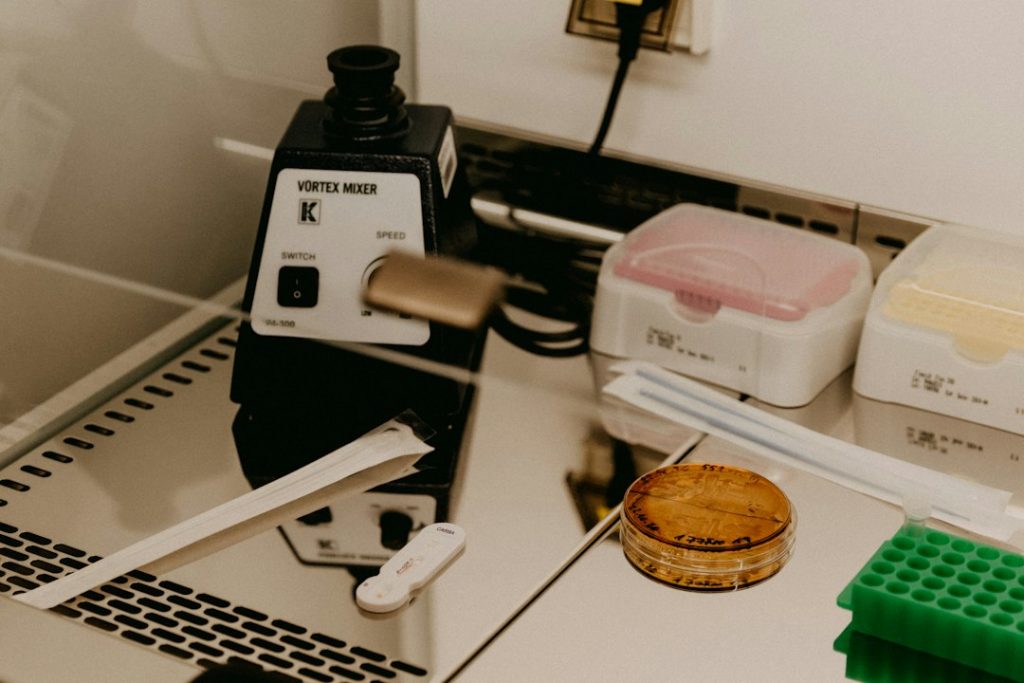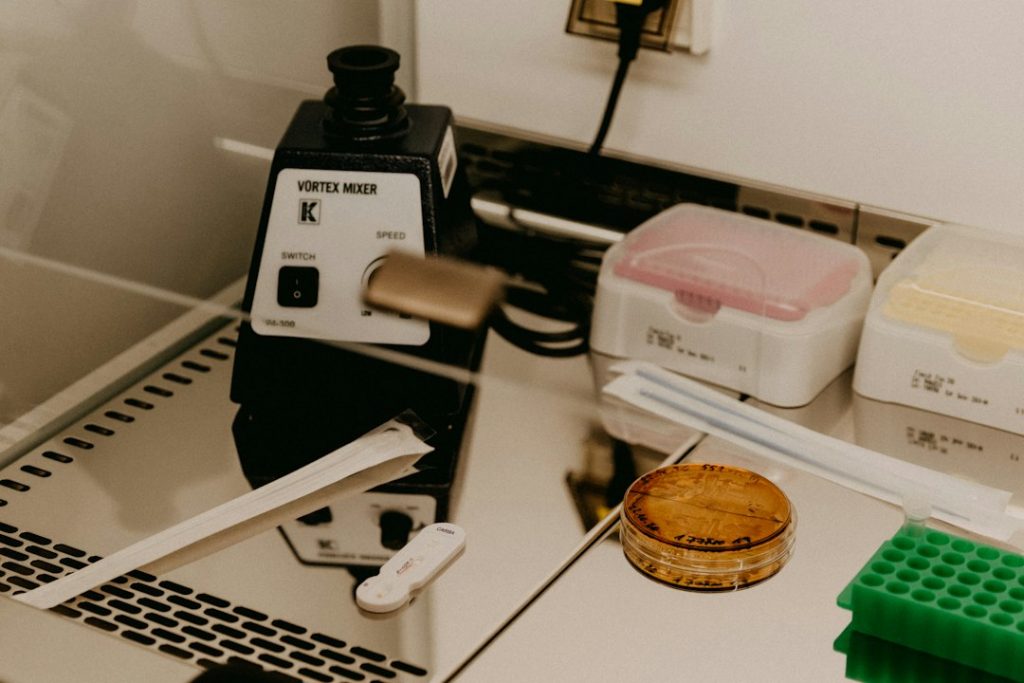Computational chemistry is a branch of chemistry that uses computer simulations and mathematical models to study chemical systems. It involves the application of theoretical methods, such as quantum mechanics and molecular dynamics, to understand and predict the behavior of molecules and materials. Computational chemistry plays a crucial role in modern research, as it allows scientists to explore chemical phenomena that are difficult or impossible to study experimentally.
The field of computational chemistry has a rich history, dating back to the 1950s. Early pioneers in the field, such as John Pople and Walter Kohn, laid the foundation for the development of computational methods that are still widely used today. Over the years, computational chemistry has evolved and expanded, with advancements in computer hardware and software enabling more complex simulations and calculations.
Summary
- Computational chemistry is the use of computer simulations to study chemical systems and processes.
- The UK has a long history of contributions to computational chemistry, with notable advancements in the use of supercomputers.
- Supercomputers are essential for performing complex calculations in computational chemistry, allowing for the study of large molecules and systems.
- Computational chemistry has numerous applications in drug discovery and materials science, including the design of new drugs and materials with specific properties.
- Quantum mechanics and molecular dynamics are important tools in computational chemistry, allowing for the study of chemical reactions and the behaviour of molecules.
The Evolution of Computational Chemistry in the UK
The United Kingdom has been at the forefront of computational chemistry research since its inception. In the 1960s, the University of Cambridge became a hub for computational chemistry, with researchers like John Pople and Michael Dewar making significant contributions to the field. Pople’s work on developing quantum mechanical methods for calculating molecular properties earned him the Nobel Prize in Chemistry in 1998.
Other key players in UK computational chemistry include Christopher Dobson at the University of Cambridge, who has made important contributions to understanding protein folding and misfolding, and Peter Coveney at University College London, who has pioneered the use of supercomputers for simulating biological systems.
Milestones and breakthroughs in UK computational chemistry research include the development of density functional theory (DFT) by Walter Kohn and Pierre Hohenberg at the University of Oxford in the 1960s. DFT is now one of the most widely used methods in computational chemistry, allowing for accurate predictions of molecular properties with reasonable computational cost.
The Role of Supercomputers in Computational Chemistry
Supercomputers play a crucial role in computational chemistry research, as they provide the computational power needed to perform complex simulations and calculations. Supercomputers are capable of performing trillions of calculations per second, allowing researchers to study large systems and long timescales that would be otherwise impossible.
In the UK, several supercomputers have been used for computational chemistry research. One example is ARCHER, the UK’s national supercomputing service, which has been used for a wide range of scientific research, including computational chemistry. ARCHER provides researchers with access to high-performance computing resources and advanced software tools, enabling them to tackle complex problems in chemistry and other fields.
The use of supercomputers in computational chemistry offers several advantages. Firstly, it allows for more accurate and detailed simulations, as the increased computational power enables researchers to include more atoms and more complex interactions in their models. Secondly, supercomputers can significantly reduce the time required for calculations, allowing researchers to explore a larger number of chemical systems and reactions. However, there are also limitations to using supercomputers, such as the high cost of acquiring and maintaining these systems, as well as the need for specialized expertise to operate them effectively.
Applications of Computational Chemistry in Drug Discovery
| Application | Description |
|---|---|
| Virtual Screening | Using computational methods to screen large databases of compounds to identify potential drug candidates. |
| Structure-Based Drug Design | Using computational methods to design drugs that interact with specific protein targets. |
| Quantitative Structure-Activity Relationship (QSAR) Modelling | Using computational methods to predict the activity of compounds based on their chemical structure. |
| ADME-Tox Prediction | Using computational methods to predict the absorption, distribution, metabolism, excretion, and toxicity of compounds. |
| Protein-Ligand Docking | Using computational methods to predict the binding mode and affinity of a ligand to a protein target. |
Computational chemistry plays a crucial role in drug discovery, the process of identifying and developing new drugs. The drug discovery process typically involves several stages, including target identification, lead generation, lead optimization, and preclinical testing. Computational chemistry can contribute at each stage by providing insights into the structure and properties of potential drug targets and lead compounds.
One example of the application of computational chemistry in drug discovery is computer-aided drug design (CADD), which involves using computational methods to identify and optimize potential drug candidates. CADD can help researchers screen large databases of compounds to identify those with the desired properties, such as binding affinity to a target protein or selectivity against off-target proteins. This can significantly speed up the drug discovery process and reduce the cost of developing new drugs.
Another application of computational chemistry in drug discovery is virtual screening, which involves using computer simulations to predict the binding affinity of small molecules to a target protein. This can help researchers prioritize compounds for further experimental testing, saving time and resources. Computational chemistry can also be used to study the pharmacokinetics and toxicity of potential drug candidates, providing valuable information for optimizing their properties.
Computational Chemistry in Materials Science: From Nanotechnology to Polymers
Computational chemistry also plays a crucial role in materials science research, which involves studying the properties and behavior of materials at the atomic and molecular level. Materials science encompasses a wide range of disciplines, including nanotechnology, catalysis, energy storage, and polymers.
In nanotechnology, computational chemistry is used to study the properties of nanoparticles and nanomaterials, which have unique properties due to their small size. Computational methods can help researchers understand how the size, shape, and composition of nanoparticles affect their properties, such as catalytic activity or optical properties. This knowledge can then be used to design new materials with tailored properties for various applications.
In the field of catalysis, computational chemistry is used to study the mechanisms of chemical reactions on catalyst surfaces. By simulating reaction pathways and calculating reaction energies, researchers can gain insights into how catalysts work and identify ways to improve their efficiency. This can lead to the development of more effective catalysts for industrial processes, such as the production of chemicals or the conversion of renewable energy sources.
Computational chemistry is also used in the study of polymers, which are large molecules made up of repeating subunits. By simulating the behavior of polymer chains and calculating their properties, researchers can gain insights into the structure-property relationships of polymers. This knowledge can be used to design new polymers with specific properties, such as mechanical strength, thermal stability, or conductivity.
Quantum Mechanics and Molecular Dynamics in Computational Chemistry

Quantum mechanics and molecular dynamics are two fundamental theories used in computational chemistry to describe the behavior of atoms and molecules. Quantum mechanics provides a theoretical framework for calculating the electronic structure and properties of molecules, while molecular dynamics allows for the simulation of the motion and interactions of atoms and molecules over time.
Quantum mechanics is based on the principles of wave-particle duality, which states that particles, such as electrons, can exhibit both wave-like and particle-like behavior. In computational chemistry, quantum mechanics is used to solve the Schrödinger equation, which describes the behavior of electrons in a molecule. By solving this equation, researchers can calculate various molecular properties, such as energy levels, bond lengths, and vibrational frequencies.
Molecular dynamics, on the other hand, is a computational method that simulates the motion of atoms and molecules over time. It is based on classical mechanics, which describes the motion of particles using Newton’s laws of motion. In molecular dynamics simulations, the forces between atoms are calculated using interatomic potentials or force fields, which describe the interactions between atoms in a molecule. By integrating the equations of motion, researchers can simulate the behavior of molecules under different conditions, such as temperature or pressure.
Challenges and Opportunities in Computational Chemistry Research
While computational chemistry has made significant advancements over the years, there are still several challenges that researchers face in this field. One major challenge is the accuracy of computational methods. While many methods have been developed to calculate molecular properties, they often rely on approximations and simplifications that can introduce errors. Improving the accuracy of computational methods is an ongoing research effort in computational chemistry.
Another challenge is the scalability of computational methods. As systems become larger and more complex, the computational cost of simulating them increases exponentially. This limits the size and timescales that can be studied using current methods. Developing more efficient algorithms and taking advantage of parallel computing techniques are areas of active research in computational chemistry.
Despite these challenges, there are also many opportunities for future research in computational chemistry. One such opportunity is the development of new methods and algorithms that can accurately describe complex chemical phenomena. This includes the development of more accurate quantum mechanical methods, as well as the integration of quantum mechanics with molecular dynamics to study chemical reactions in solution or at interfaces.
Another opportunity is the use of machine learning and artificial intelligence techniques in computational chemistry. These techniques have the potential to accelerate the drug discovery process by predicting the properties of new compounds or identifying novel drug targets. Machine learning can also be used to analyze large datasets generated from computational simulations, helping researchers gain insights into complex chemical systems.
The Future of Computational Chemistry: Emerging Trends and Technologies
The field of computational chemistry is constantly evolving, with new trends and technologies emerging that have the potential to revolutionize research in this field. One emerging trend is the use of high-throughput virtual screening, which involves screening large libraries of compounds using computational methods to identify potential drug candidates. This approach can significantly speed up the drug discovery process by allowing researchers to test a larger number of compounds in silico before moving on to experimental testing.
Another emerging trend is the use of machine learning and artificial intelligence in computational chemistry. These techniques have shown promise in predicting molecular properties, designing new materials, and optimizing chemical reactions. By combining machine learning with quantum mechanics or molecular dynamics, researchers can develop more accurate models and simulations that can provide valuable insights into complex chemical systems.
In addition to these trends, there are also several emerging technologies that have the potential to impact computational chemistry research. One such technology is quantum computing, which uses quantum bits or qubits to perform calculations. Quantum computers have the potential to solve certain problems in computational chemistry much faster than classical computers, such as simulating large molecules or optimizing chemical reactions. However, the development of practical quantum computers for computational chemistry is still in its early stages and faces many technical challenges.
Career Opportunities in Computational Chemistry in the UK
Computational chemistry offers a wide range of career opportunities in both academia and industry. In academia, computational chemists can work as research scientists or professors, conducting cutting-edge research and teaching students. They can also work in interdisciplinary research centers or collaborate with experimental chemists and biologists to solve complex problems.
In industry, computational chemists can work in pharmaceutical companies, biotechnology firms, or chemical companies, where they can contribute to drug discovery, materials design, or process optimization. They can also work in software development companies, developing new algorithms and software tools for computational chemistry.
To pursue a career in computational chemistry, a strong background in chemistry, mathematics, and computer science is essential. A bachelor’s degree in chemistry or a related field is typically required for entry-level positions, while a Ph.D. is often required for research positions. Additional training in computational methods and programming languages is also beneficial.
Collaborations and Partnerships in Computational Chemistry: Industry and Academia
Collaborations and partnerships between industry and academia play a crucial role in advancing computational chemistry research. By bringing together the expertise and resources of both sectors, these collaborations can accelerate the development of new methods, algorithms, and software tools for computational chemistry.
One example of a successful collaboration between industry and academia is the Innovative Medicines Initiative (IMI), a public-private partnership between the European Union and the pharmaceutical industry. The IMI funds collaborative research projects that aim to accelerate the discovery and development of new medicines. Many of these projects involve computational chemistry, as it plays a crucial role in drug discovery.
Collaborations between industry and academia can also benefit from the exchange of knowledge and expertise. Industry partners can provide researchers with access to large datasets, experimental data, or specialized equipment, while academic partners can contribute their expertise in computational methods and theoretical models. This collaboration can lead to the development of new tools and technologies that have practical applications in industry.
In conclusion, computational chemistry is a rapidly evolving field that plays a crucial role in modern research. It has applications in drug discovery, materials science, and many other areas of chemistry. The UK has been at the forefront of computational chemistry research, with key players and institutions making significant contributions to the field. The use of supercomputers, quantum mechanics, and molecular dynamics has enabled researchers to tackle complex problems and make important discoveries. Despite the challenges that computational chemistry faces, there are also many opportunities for future research and the development of new technologies.
FAQs
What is Computational Chemistry?
Computational Chemistry is a branch of chemistry that uses computer simulations to study chemical systems. It involves the use of mathematical algorithms, computer programs, and theoretical models to understand chemical phenomena.
What are the applications of Computational Chemistry?
Computational Chemistry has a wide range of applications in various fields such as drug discovery, materials science, environmental science, and biochemistry. It is used to predict the properties of molecules, study chemical reactions, and design new compounds.
What are the advantages of Computational Chemistry?
Computational Chemistry offers several advantages such as cost-effectiveness, speed, and accuracy. It allows researchers to study complex chemical systems that are difficult or impossible to study experimentally. It also helps in reducing the number of experiments required to obtain results.
What are the limitations of Computational Chemistry?
Computational Chemistry has some limitations such as the need for high-performance computing resources, the accuracy of the models used, and the complexity of the systems being studied. It also requires a high level of expertise in both chemistry and computer science.
What are the types of Computational Chemistry?
There are several types of Computational Chemistry such as molecular mechanics, quantum chemistry, and molecular dynamics. Molecular mechanics is used to study the structure and properties of molecules, while quantum chemistry is used to study the electronic structure of molecules. Molecular dynamics is used to study the motion and interactions of molecules over time.
What are the tools used in Computational Chemistry?
There are several tools used in Computational Chemistry such as molecular modeling software, quantum chemistry software, and molecular dynamics software. These tools allow researchers to visualize and manipulate molecules, simulate chemical reactions, and analyze data.


